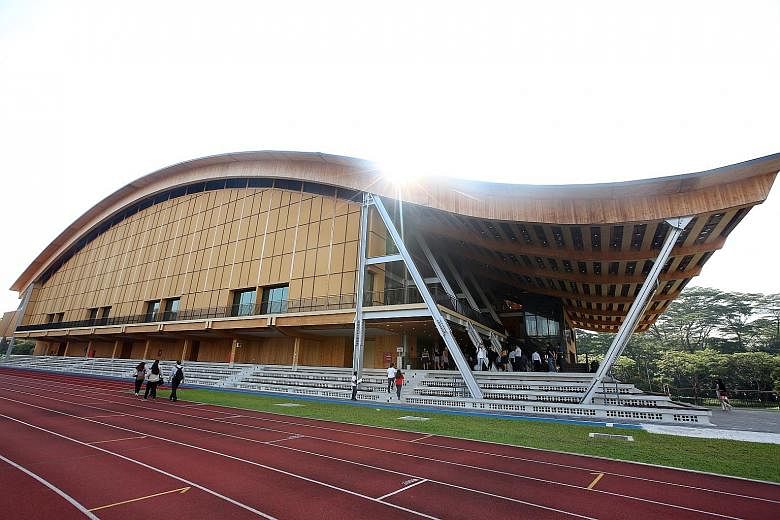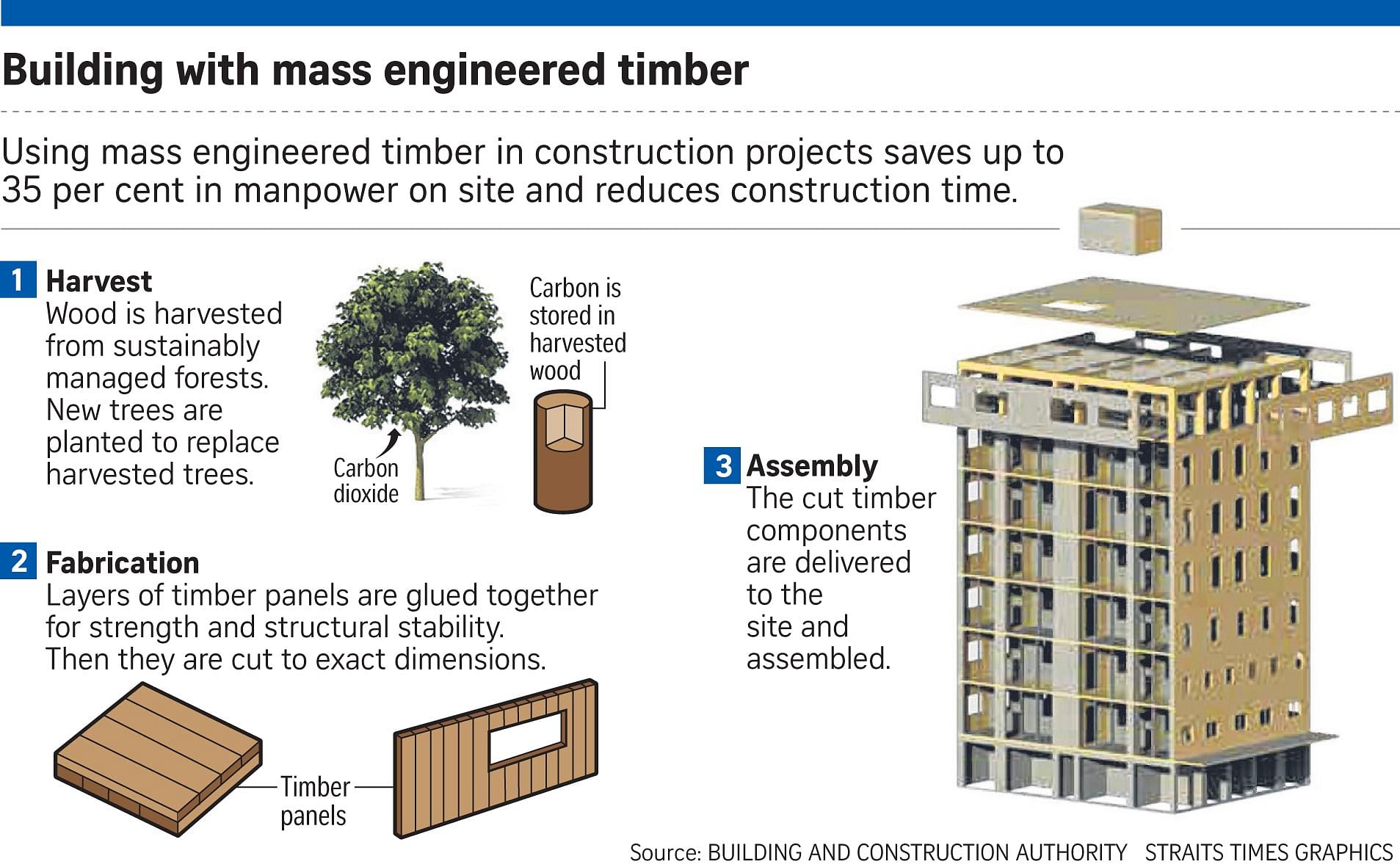Singapore hopes to multiply the number of buildings it will churn out using more efficient techniques that require fewer workers.
By 2020, four in 10 construction projects, including Housing Board flats, will use these newer technologies - up from the current one in 10.
Minister for National Development Lawrence Wong announced the target yesterday, saying existing methods are not sustainable in the long term. They are labour intensive and would lead to a "far larger pool of foreign workers than we can possibly accommodate in Singapore".
"The shortage of workers ends up becoming a bottleneck and a constraint in our development - we end up having to defer projects," he said at the launch of a new sports hall at Nanyang Technological University (NTU).
The sports hall, called The Wave, is made mostly of mass engineered timber. Parts are prefabricated, speeding up construction, while yielding a 25 per cent savings in labour.
In particular, the 72m-long, wave-like roof was put together by only 14 workers in about three weeks. Conventional methods would have taken 30 workers and up to three months to complete, said Mr Kang Choon Boon, managing director of B19 Technologies, the contractor for The Wave.
Mr Wong said if Singapore adopts similar technologies, many more projects can be carried out with the same number of workers. Public agencies will take the lead in adopting these technologies.
Many public agencies are already doing so for their projects, said Building and Construction Authority (BCA) chief executive officer John Keung.
But industry insiders say achieving the Government's goal would be an uphill task.
For one thing, the new technologies are more expensive. For instance, The Wave cost $35 million to construct. Traditional methods may require more workers, but are cheaper.
Already, the construction sector - the worst performing in Singapore, forecast to grow just 0.3 per cent this year - is watching its bottom line closely. Small contractors, in particular, have been hit hard by a slowdown in business volume and tighter manpower constraints.
Singapore Contractors Association president Kenneth Loo reckoned that it will take more than three years to achieve the Government's aim. "While some of our members are ready, it will take some time to build up across the whole industry," he said.
For costs to come down, more companies must use the technologies, said the BCA, which has the $800 million Construction Productivity and Capability Fund to subsidise such initiatives.
"This is a demand and supply problem," said Dr Keung. "When you have more of such projects, you have an economy of scale and, over time, costs will definitely come down."
SEE TOP OF THE NEWS: Cost stands in the way of efficient building techniques



